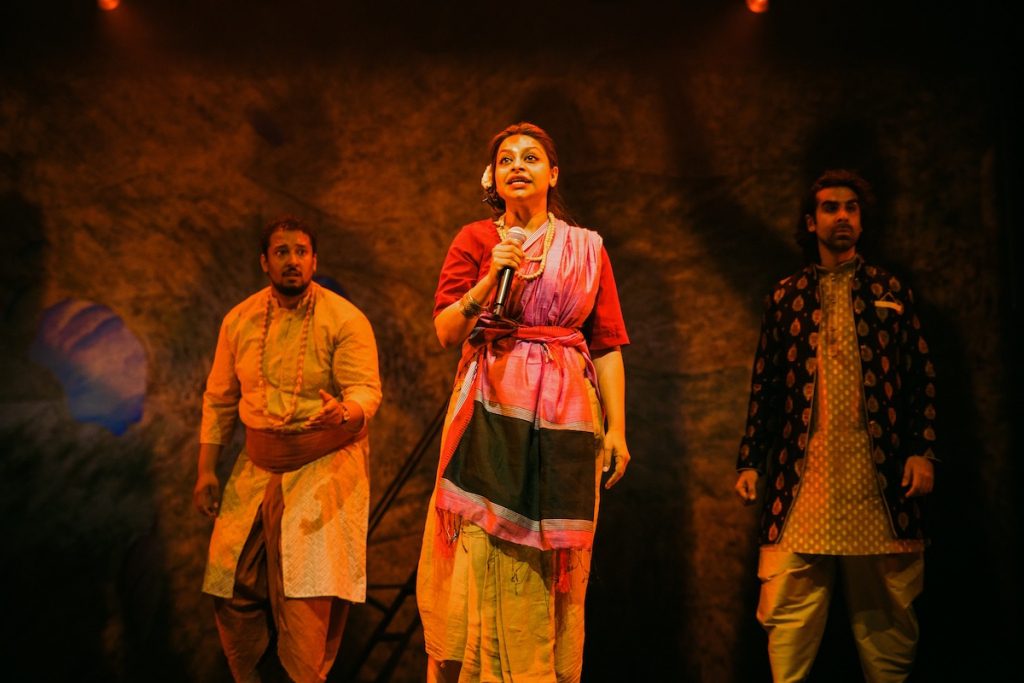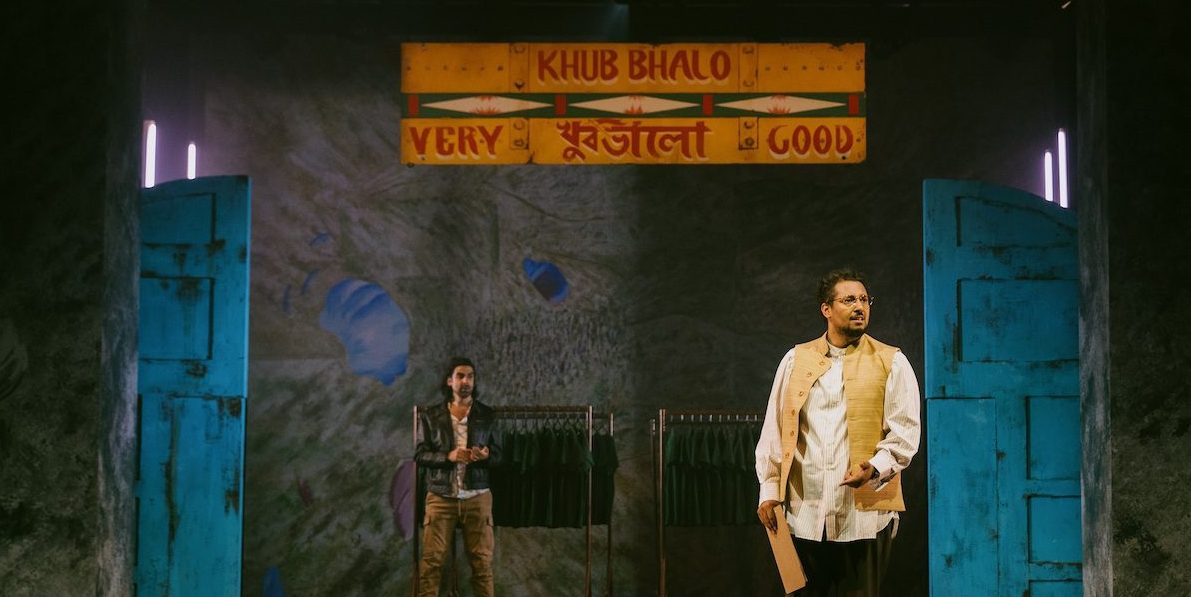This new play at the Young Vic operates on a number of levels. On the face of it, the play is a family drama woven into a stand-off at a clothing factory in West Bengal that has a tragic denouement. But it also digs deeper in two ways. Firstly, the author wants to analyse the levels of responsibility for contemporary capitalism, questioning how far individuals are responsible for their own outcomes when they may in fact have few choices. Secondly, and connectedly, the power and nature of storytelling are probed as a way of viewing and framing these other dramatic priorities. When all three levels fuse together the results make for powerful viewing. But unfortunately, this is only intermittently the case.
Prab, a machinist, and his wife Kajol are trying to make ends meet while the local factory awaits new orders. He whiles away the time elaborating his own version of stories from the ‘Mahabarata’ for his infant daughter, Amba. An encounter at the theatre leads him to become the dramaturg for a local ‘jatra’ folk theatre group run by Devesh, the son of the factory owner who has artistic aspirations, and his girlfriend Chellam, a professional actress. This in turn offers Prab a leg up on management when the factory reopens. Thereby his family achieves security but at the price of compromising his integrity, which is put to the ultimate test when child labour becomes a staple feature of factory life, and he is required to defend the indefensible.
For much of the first half, the balance of all the competing elements is well sustained: Battacharyya has a gift for plausible dialogue that can carry the weight of ideas too, and this is well demonstrated in the debates between Prab and Kajol over how far one should compromise in order to find financial safety, and in the witty satire of capitalism that is projected through the ‘jatra’ rehearsals in which Chellam and Devesh joust through mythology. The author is admirably even-handed in presenting the ways in which individuals, whether rich or poor, are both confined and restricted in their free choices, albeit in different and unequal ways. The presentation of the reworked myths is also done with great charm and sensitivity through video projections reminiscent of ‘The Bone Sparrow’, another work in this genre.

However, as the tone darkens in the second half, the direction of the play becomes more predictable and the various levels chafe against one another. What has so far been an interesting and original reflection on the dilemmas of middle management becomes much more of a straightforward protest piece. While no one would quarrel with the sentiments expressed they still need full dramatic representation and here nuance is sacrificed to advocacy. This is particularly the case with the ending which picks up on the life of the now-adult Amba and places her at the heart of the UK gig economy. Here the presentation is too rushed and superficial for this comparison to graft successfully onto the body of the play – though there were plenty in the audience on press night who clearly found it convincing.
There is some excellent acting throughout the two hours of the show. In the lead role, Irfan Shamji describes a clear and plausible journey from compromise through to outrage and principled courage. He is well matched by Zainab Hasan as his wife, who puts her case across with passion and humour in a fully rounded presentation. Scott Karim does his best to find levels of complexity in Devesh who, for the play to work, needs to be more than a two-dimensional villain. Best of all is Ayesha Dharker, as the world-weary Chellam: she displays expert comic timing with some of the best put-downs of the play, and also enters into the fantasy role of Chandi with conviction and inventive panache.
Production values, as usual at the Young Vic, are excellent. Director Milli Bhatia and designer Moi Tran have devised a plain but flexible stage, with two revolving platforms. They manage to suggest domestic and factory-floor interiors with great economy of means and there is plenty of compelling movement to retain visual interest. Lighting, sound, and video design all discretely assist the final product with delicate and brutal effects, as required.
This is a continuously engaging evening, with a lot of talent on display, but the dramatic results are not always more than the sum of the parts.

